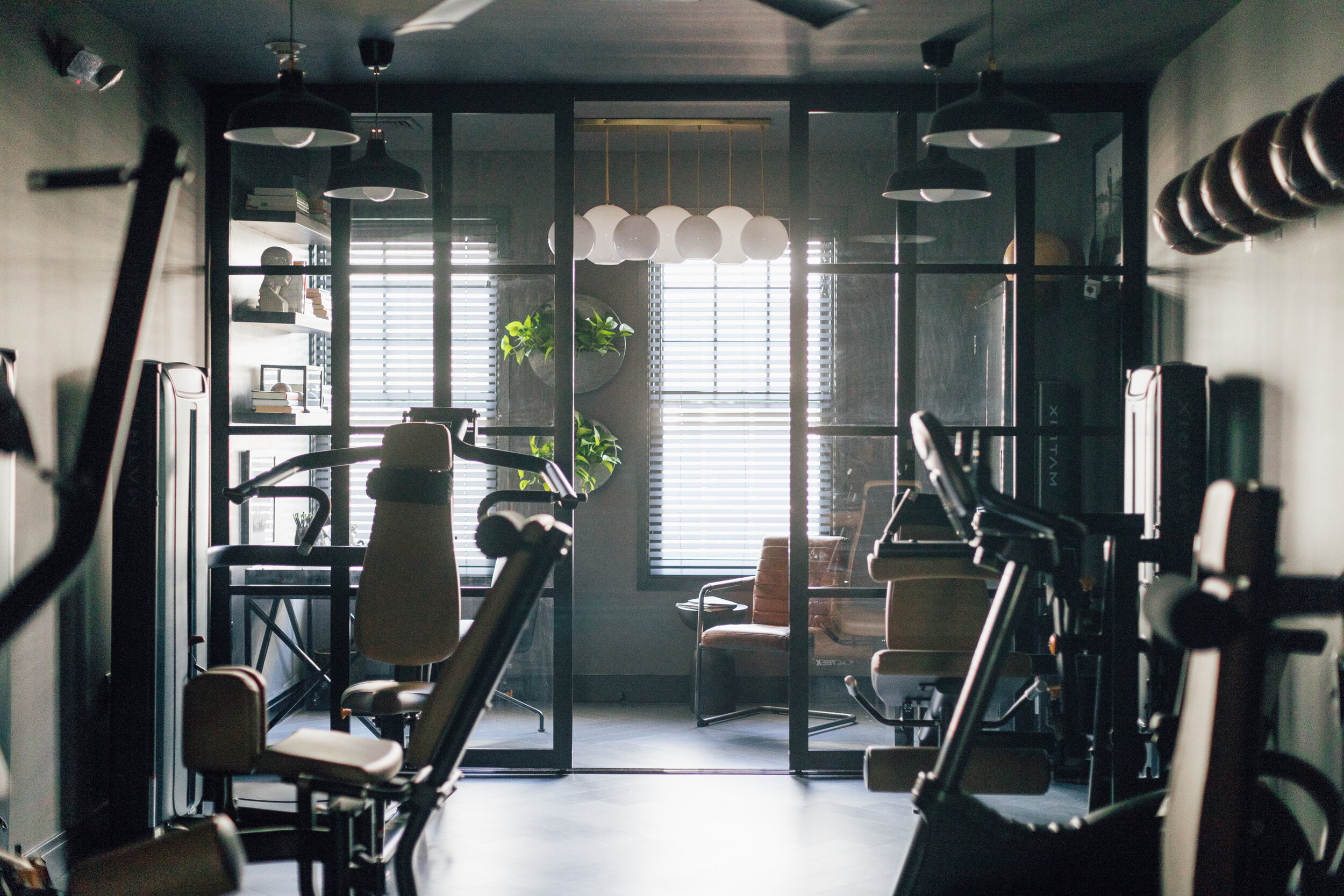New England Home: Countdown Fitness
A Designer Flexes His Creative Muscles on a Greenwich Fitness Studio
Written by Maria LaPiana | Photography by Julia Dags | Original Article
interior designers and psychologists know that the built environment can affect mood and wellness in profound ways. Evidence-based interior design principles—calming palettes, invigorating scents, and natural lighting—can improve the quality of the human experience wherever people gather, learn, heal, work, play, or pray.
A tranquil environment can even enhance the workout experience, according to Anel and Julia Dzafic, owners of Countdown Fitness in Greenwich. The ambiance at their boutique fitness studio is the polar opposite of the light, bright, high energy attitude found in the gyms most of us are used to. The intimate space is warm, with dusky lighting, rhythmic, upbeat music, and the scent of diffused essential oils.
It’s not the look they were going for at first, but their interior designer convinced them otherwise. They were thinking white walls, light wood flooring, and a Scandinavian feel when they called on Robert Passal, of Putnam & Mason in Greenwich, to create a one-of-a-kind studio in an 800-square-foot, second story space.
It was new territory for the designer, who usually works on residential projects, but he went with his instincts. “When I saw the raw space, it had what I call a ‘cocoon effect.’ It was dark and moody,” says Passal. “I immediately thought it should be warm and encompassing, dark, sensory, sexy.” “We wanted to stand out and be memorable,” says Julia. “So once Robert put the dark and moody idea into our heads, we knew that was it.” They wanted their clients to feel at ease in an environment that was both calming and conducive to the hard work of getting and staying fit. “We were very involved in the design process every step of the way—from the paint colors to the decor to the lighting,” Julia says, “but because we’re both so busy, we had to let go and let Robert develop his vision. We knew he would create something very special.”
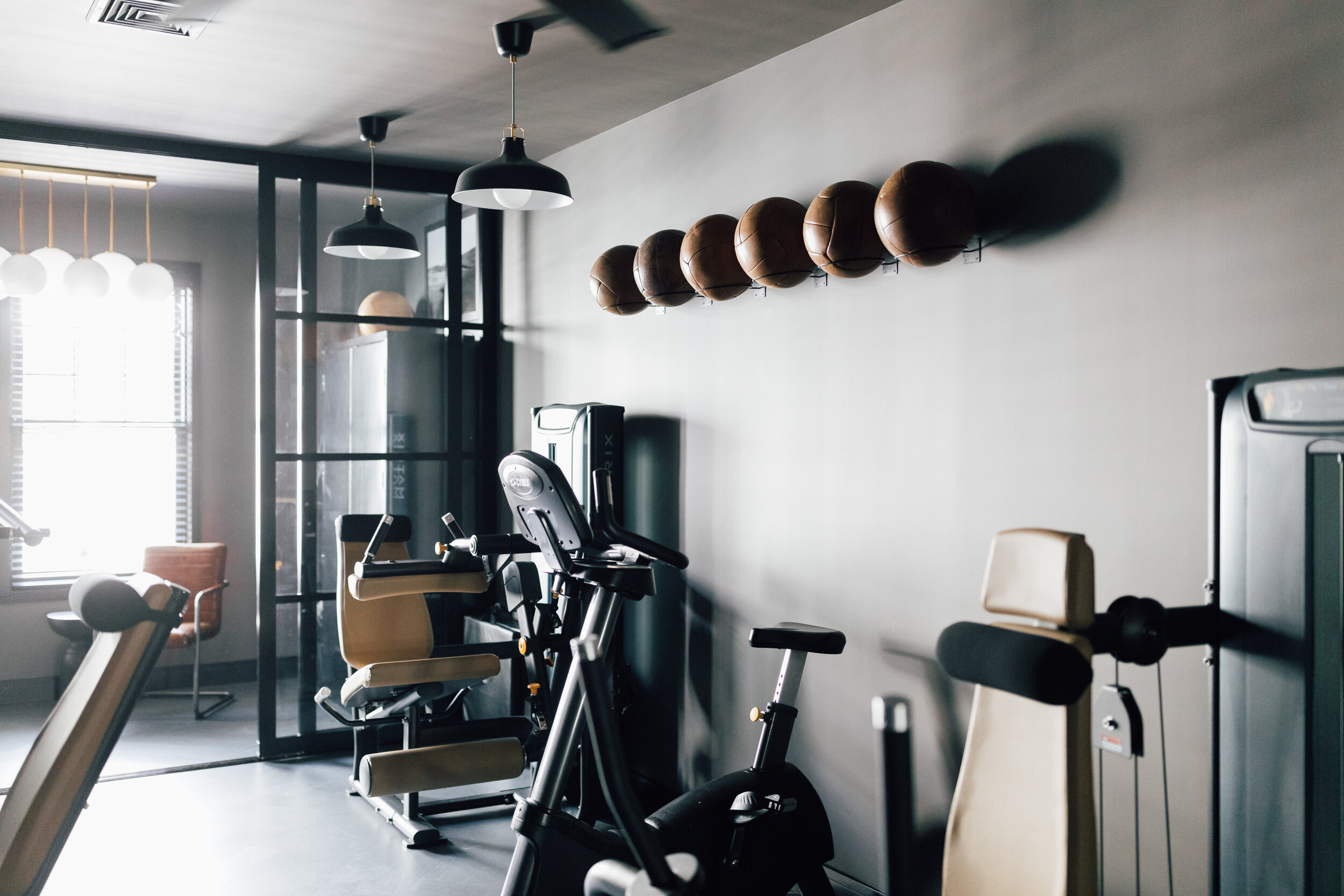
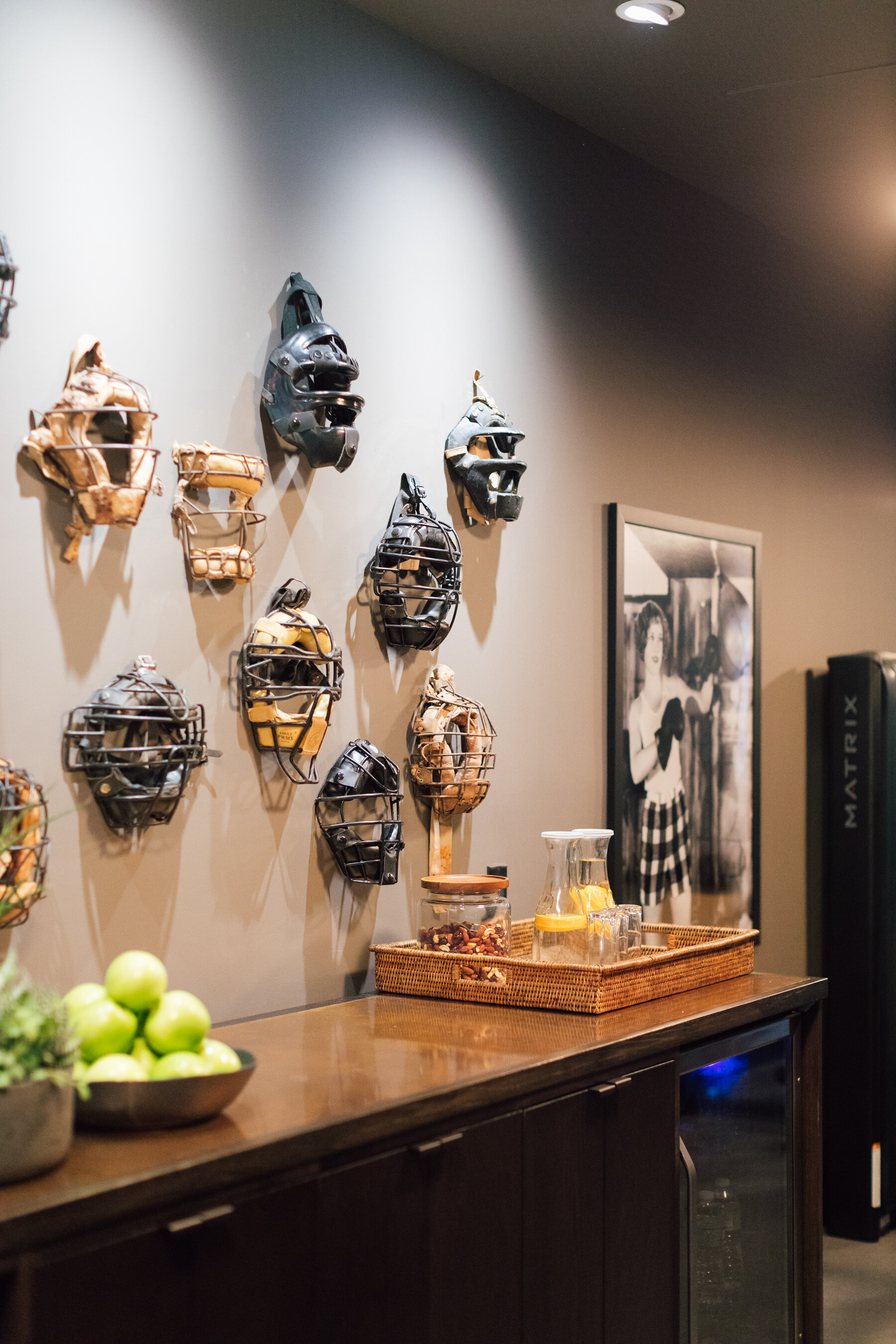
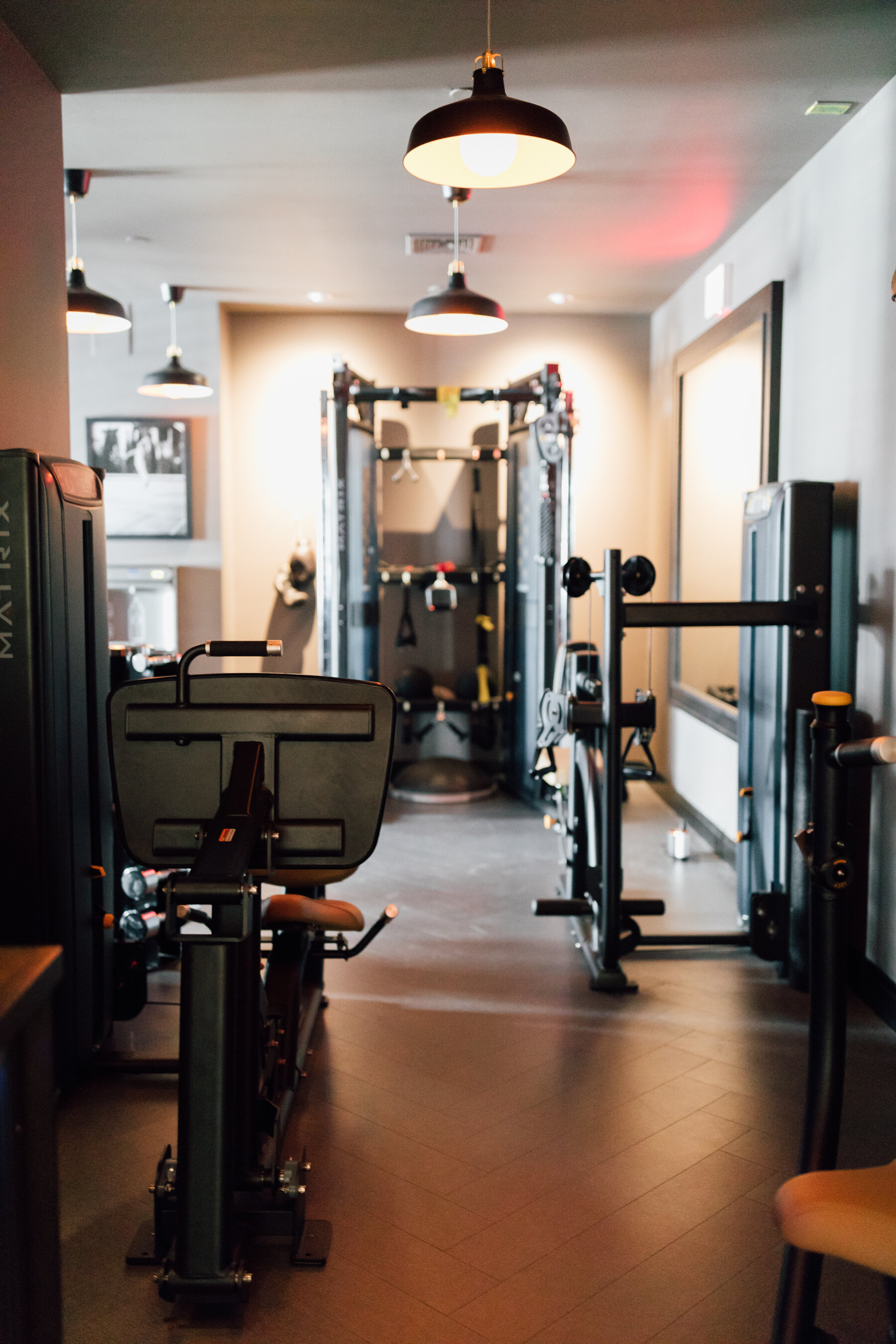
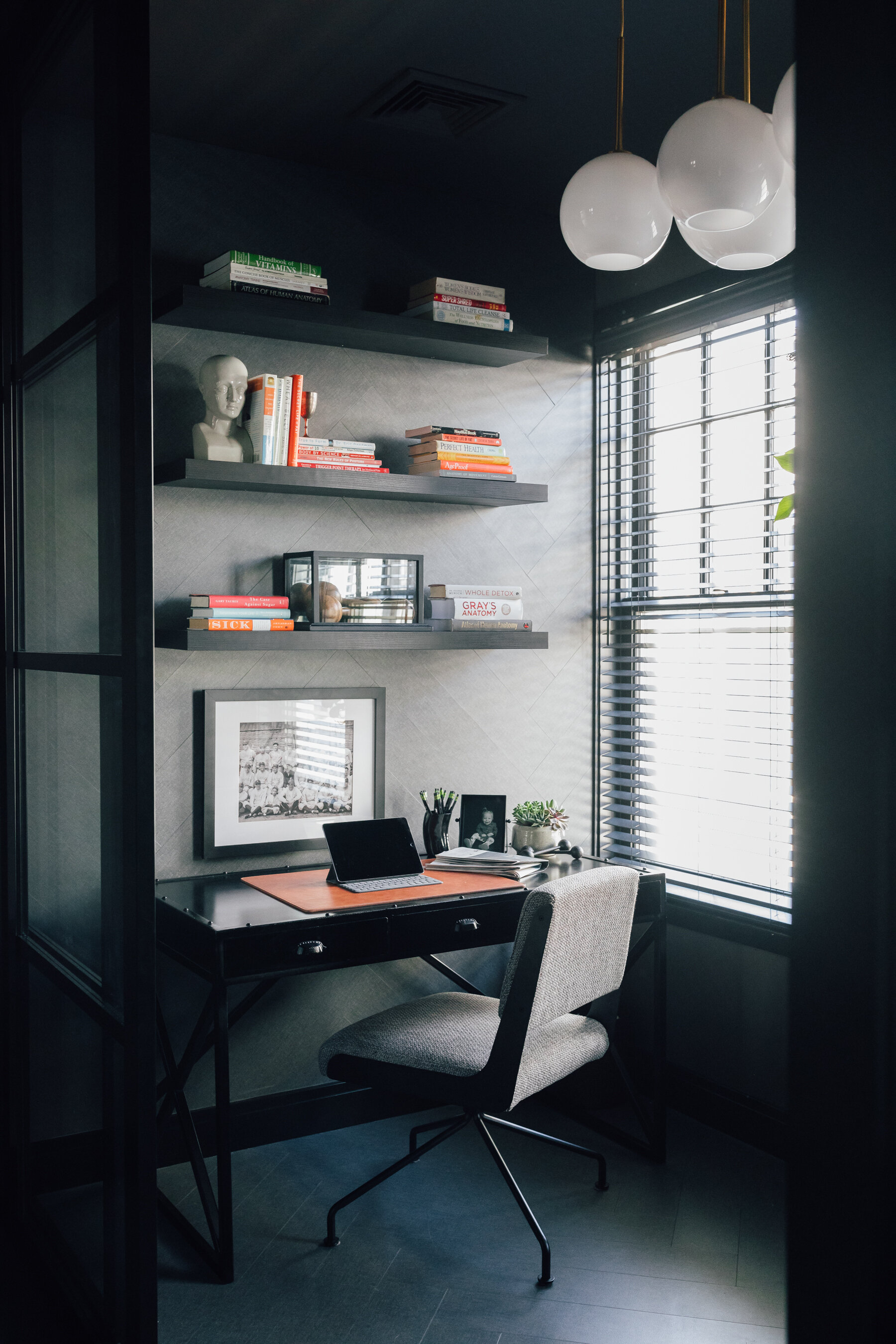
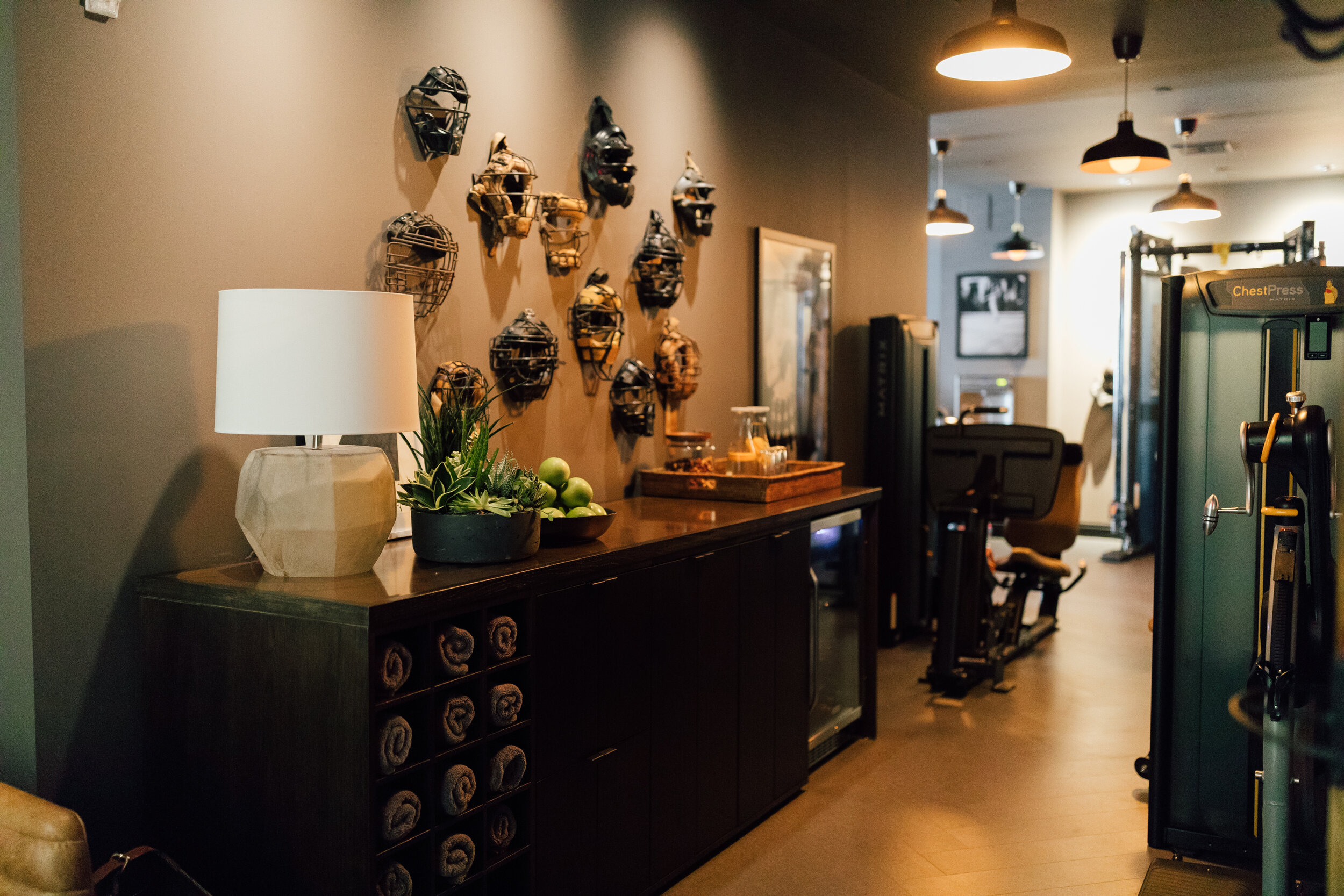
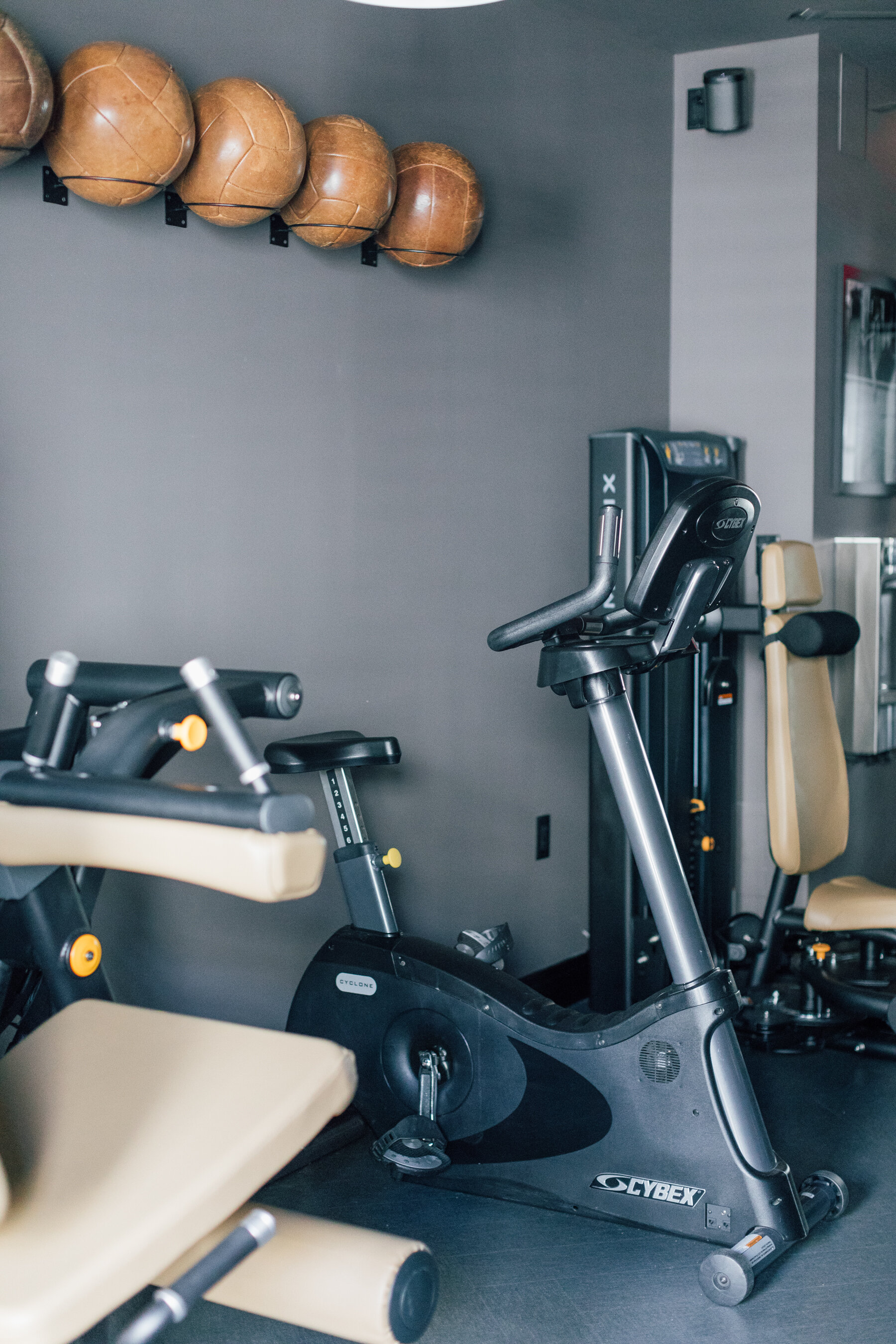
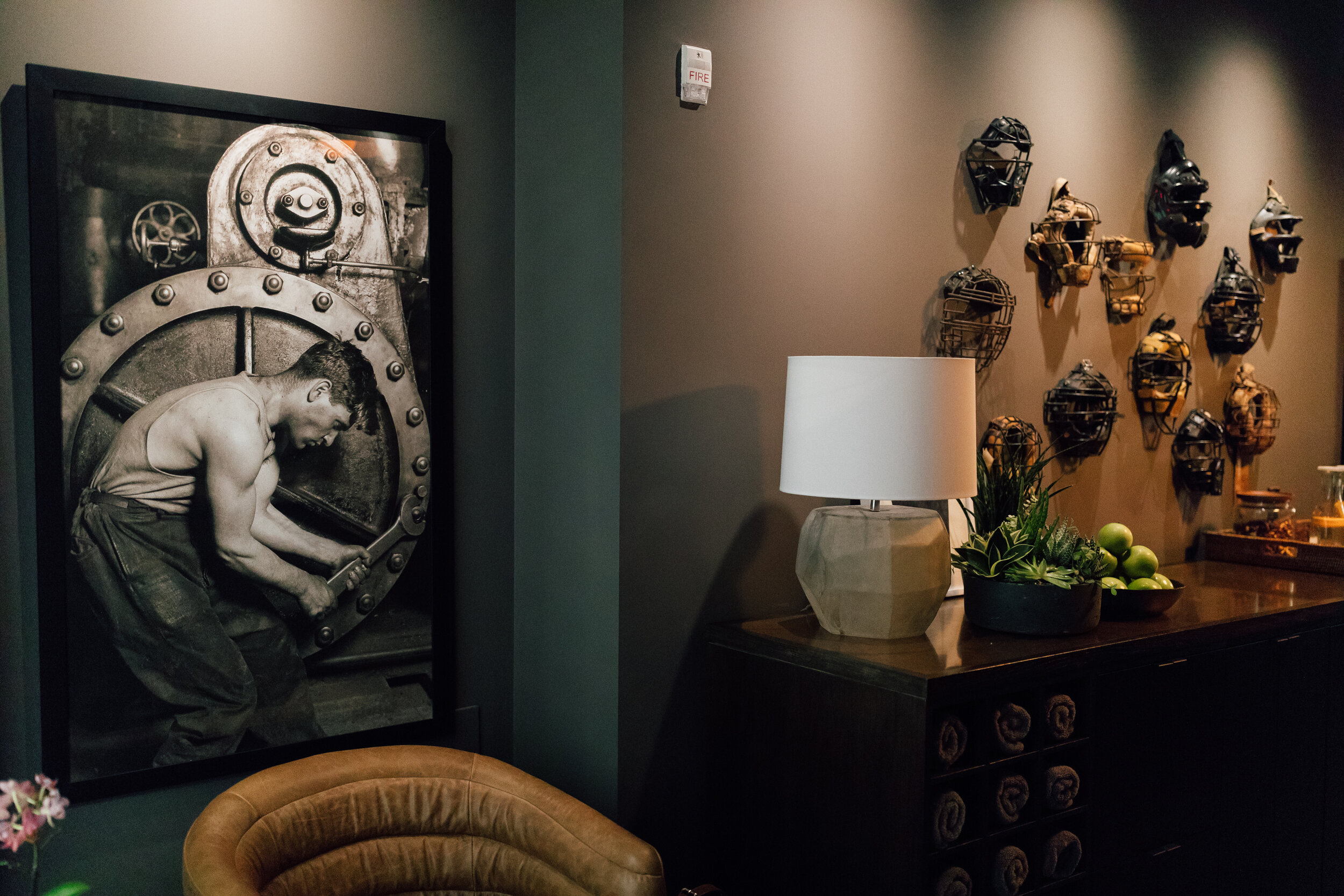
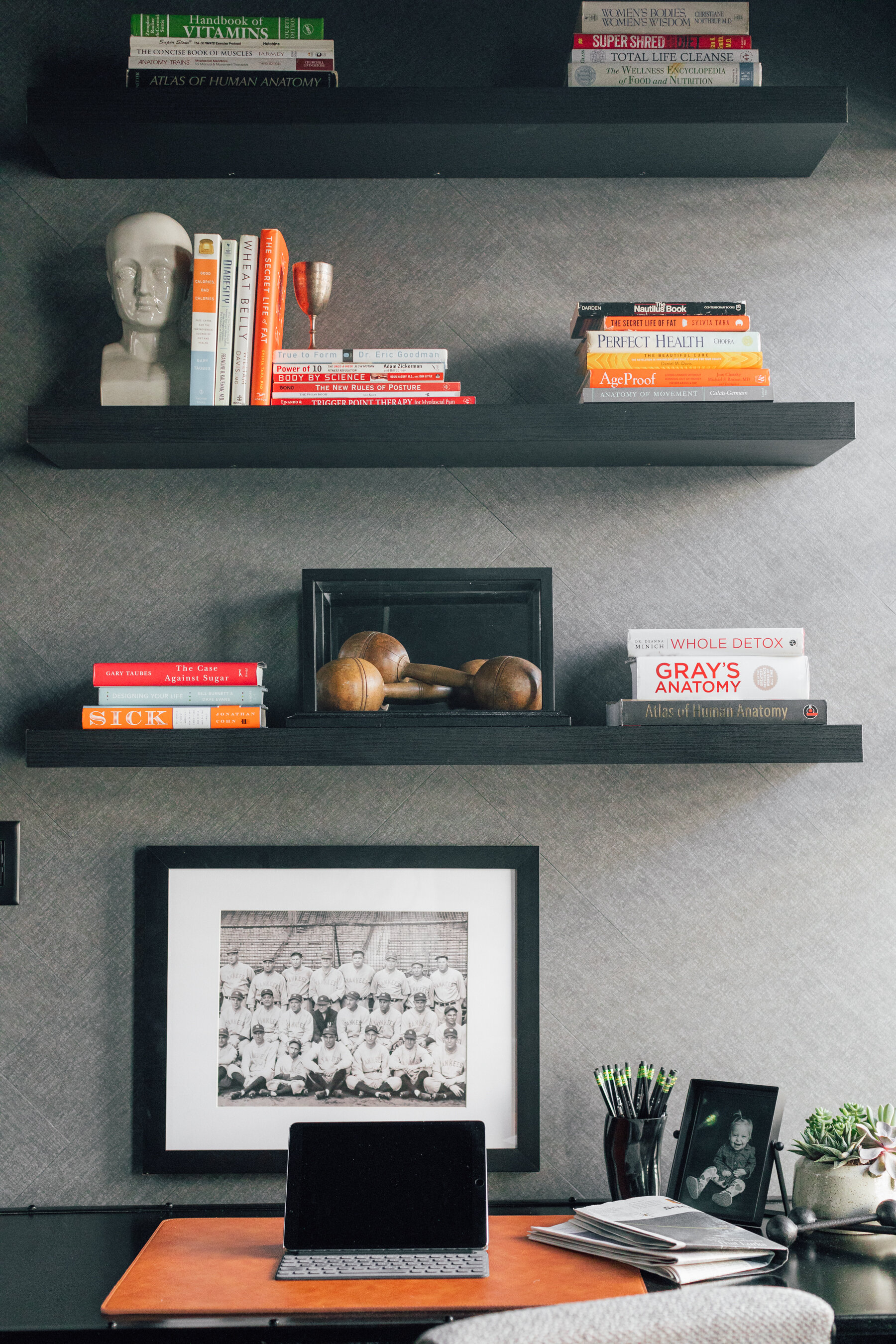
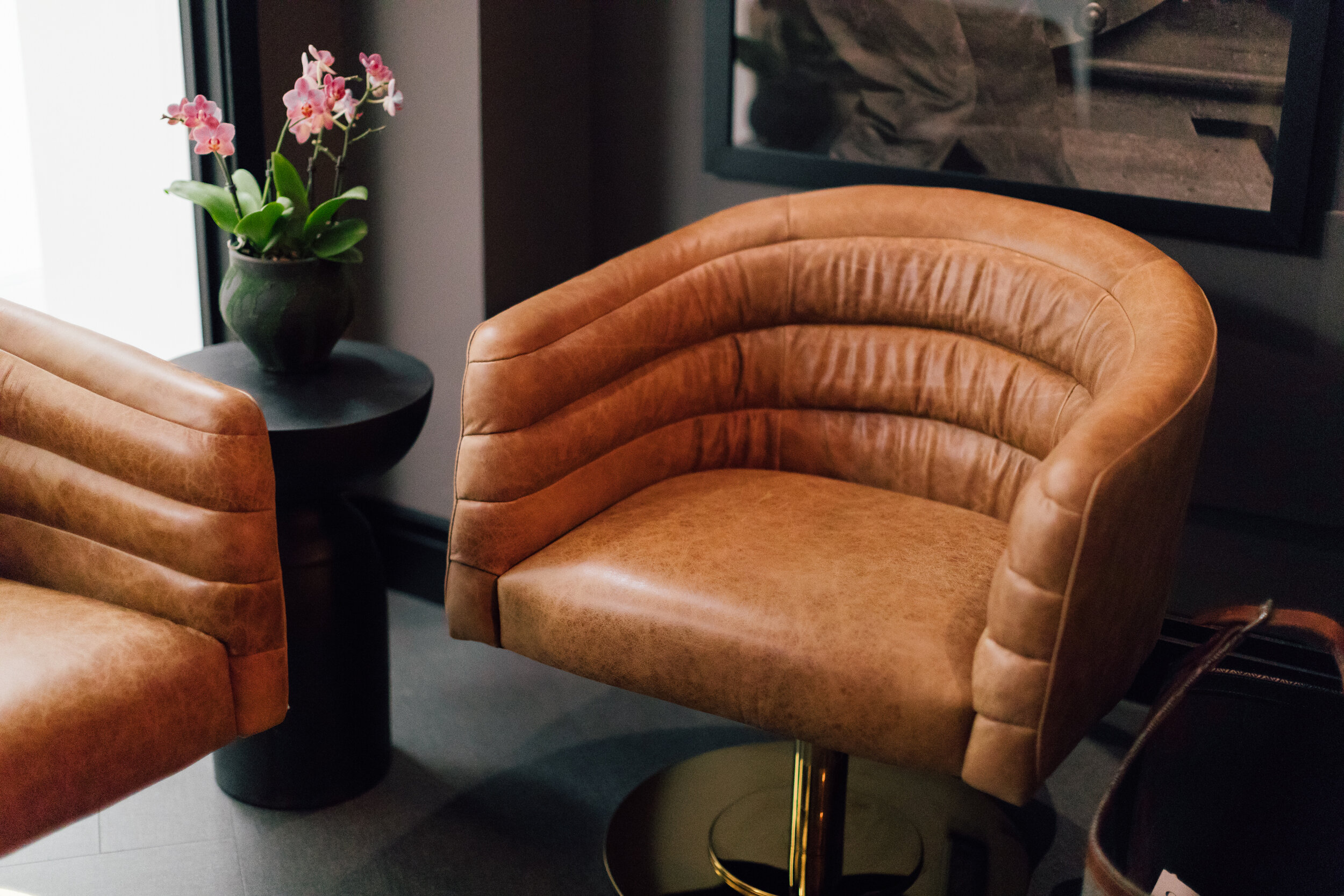
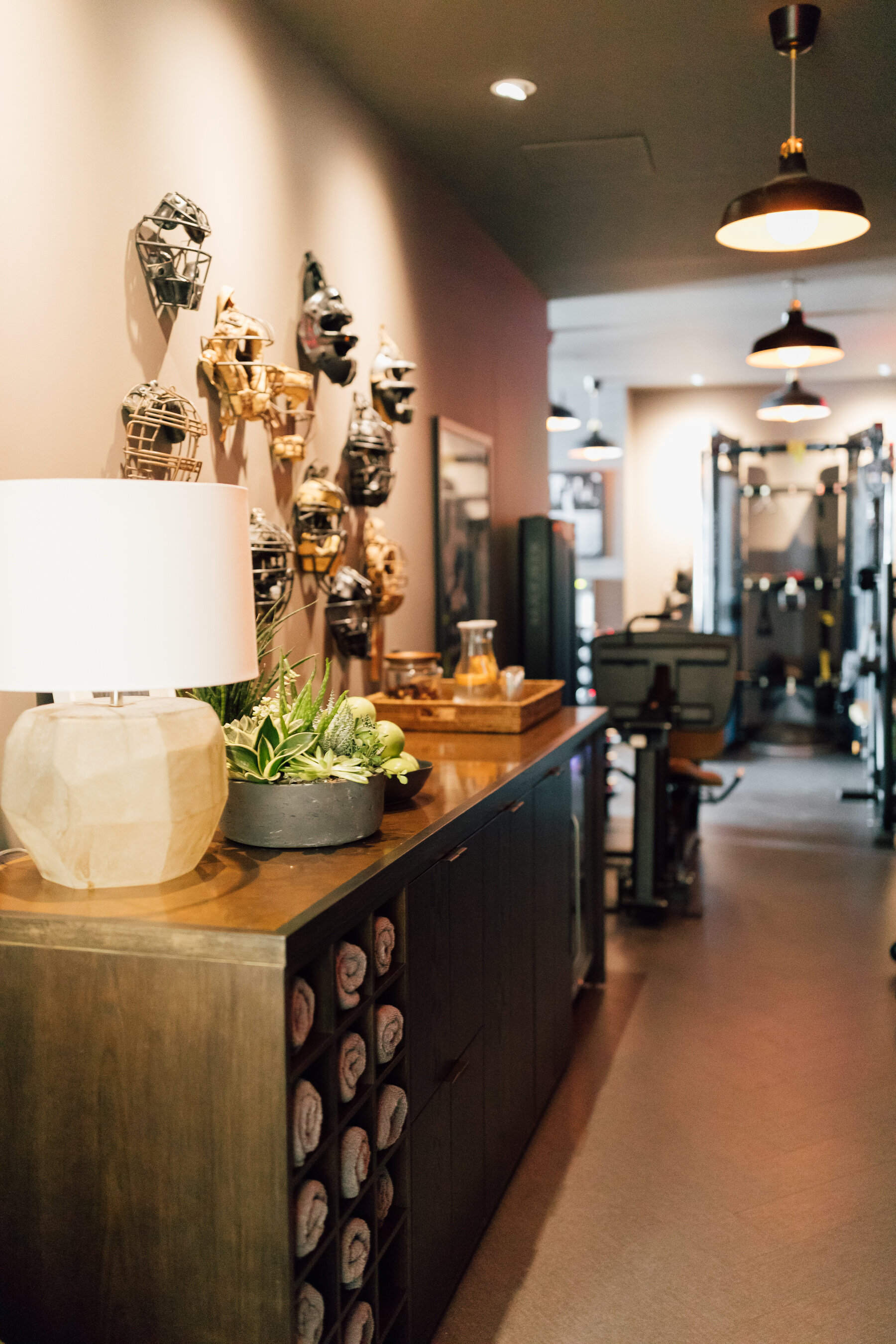
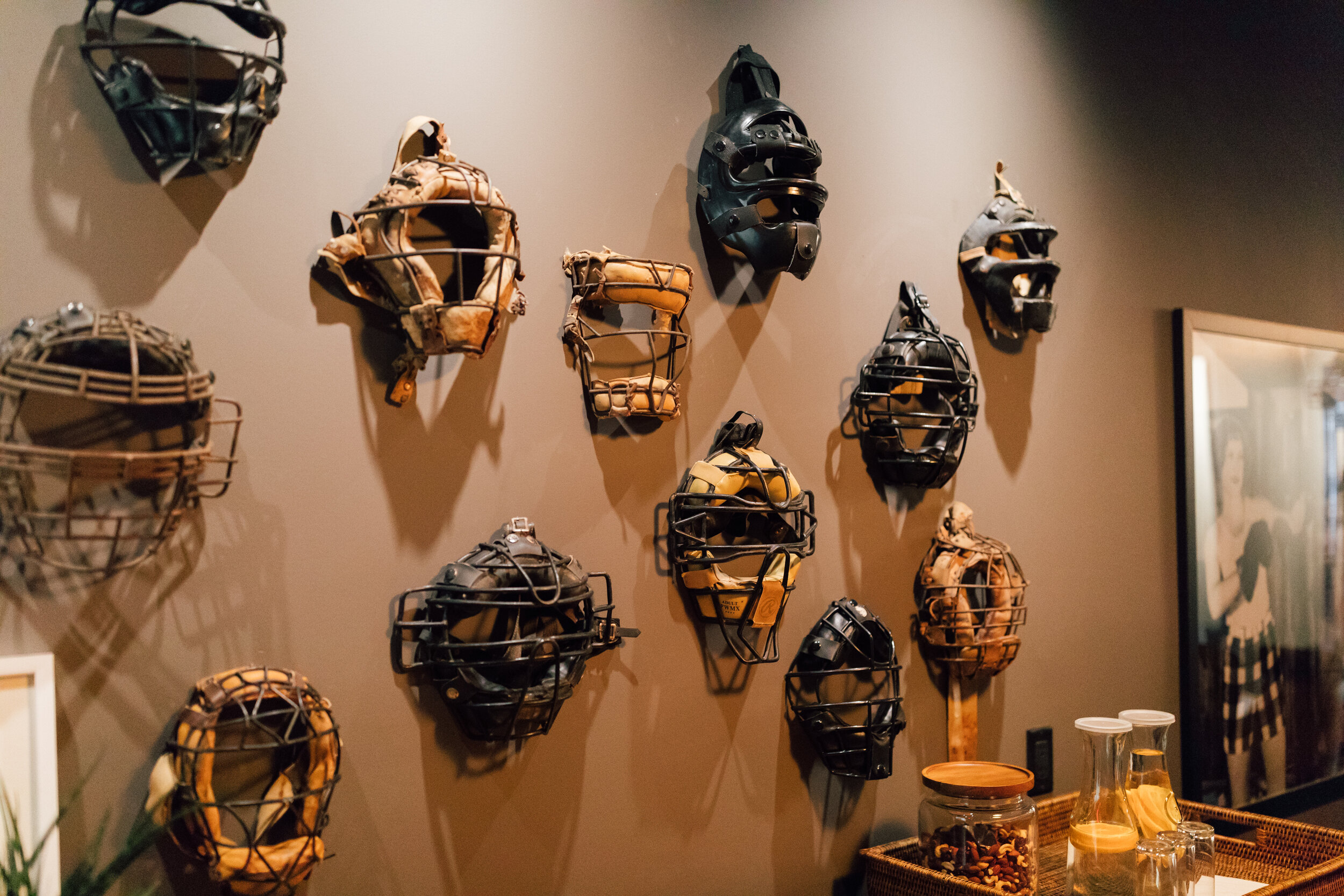

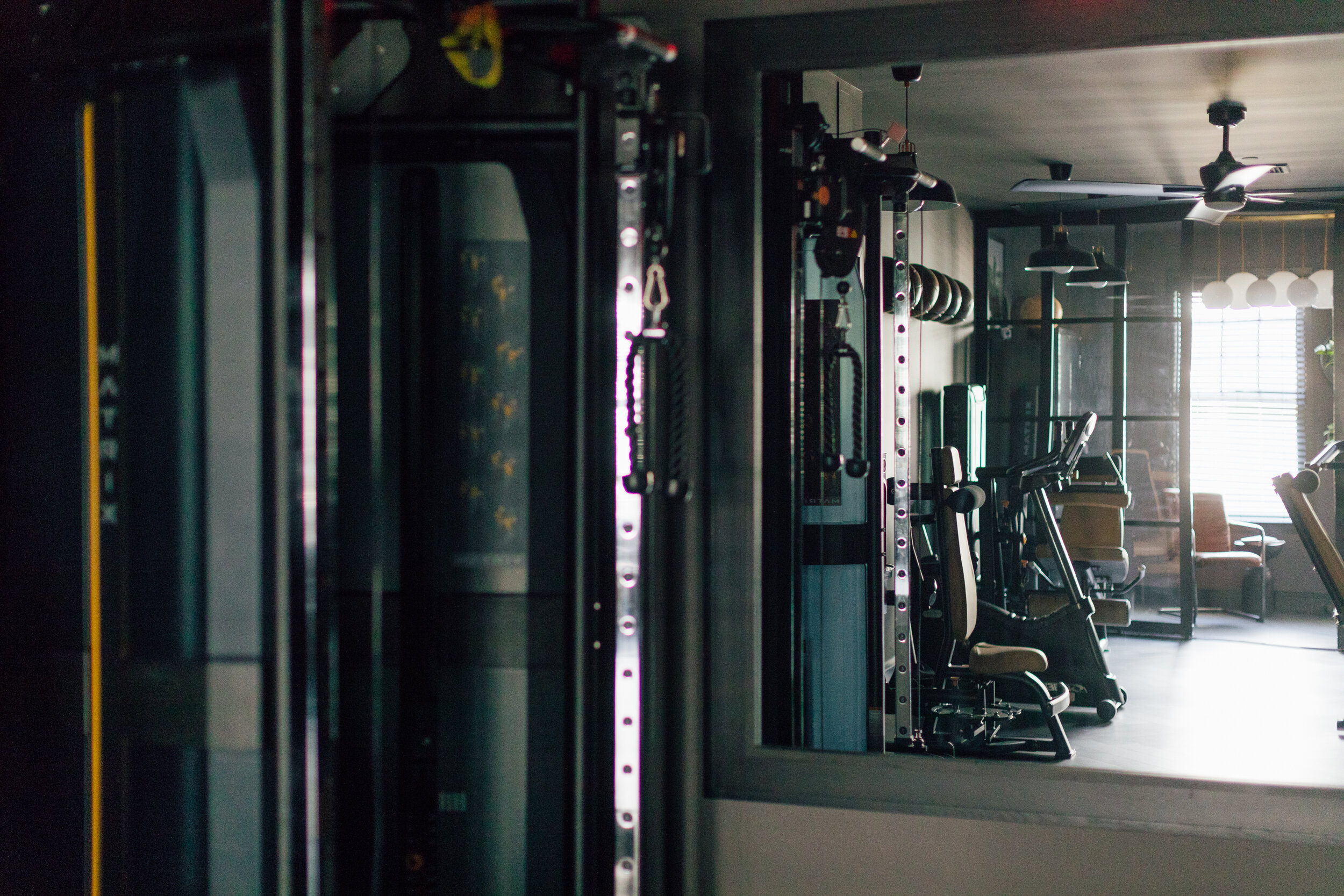
“We painted the walls and ceiling a single tone of dark gray to create a seamless environment,” Passal says. He chose tile floors and filament lighting, and carved out an office and consultation room, defining it with sliding doors of glass and bronze. A sitting area holds comfortable leather chairs, and black and brass accents add drama. It doesn’t take long to notice an array of details, from intriguing artwork and a custom console to a self-serve bar stocked with healthy snacks.
Vintage sporting memorabilia creates visual interest throughout. “All of the vintage aspects are really cool and different,” says Julia. “We have boxing gloves, a collection of Scandinavian medicine balls dating from the 1920s, and wooden dumbbells.” A sculptural collection of old catchers’ masks hangs on one wall. “That element mixed with the sleek design of our custom machines makes an incredible impact and a special visual experience for our clients.” Passal chose a large sepia print of a man turning a gear because he saw it as motivational and aspirational.
The designer worked with Technogym on custom fitness equipment in tones of matte black and saddle leather to complement the overall palette. There’s not a ton of equipment, but that suits Anel’s training style quite well. Only two clients work out, one-on-one with a trainer, at any given time to maintain the feel of the studio and keep distractions to a minimum. The space looks put together, more spa than gym; homey, even—if you happen to live in a rather luxurious home.
Why don’t more fitness studios look like this one? “For one thing, people are afraid of the dark,” says Passal. Because clients are generally resistant to darker palettes, they gravitate toward light tones—but that’s exactly what makes Countdown Fitness stand out. Julia says prospective clients are “impressed by what they see, and they know we’re the real deal.”
Passal says his team was excited to take on this project. “It gave us an opportunity to think outside the box,” he says, “and to create an experience that could be shared by many.”

